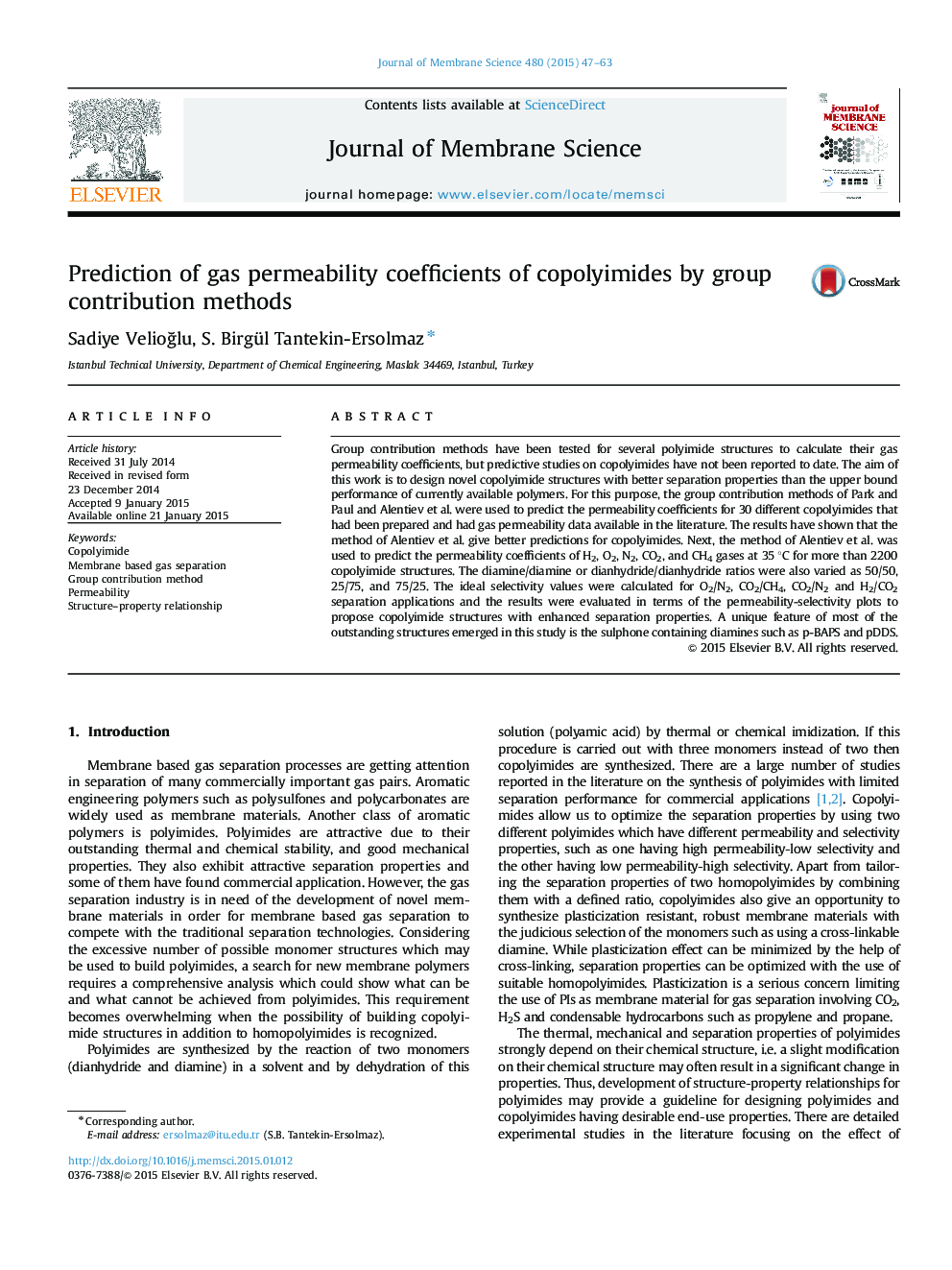| Article ID | Journal | Published Year | Pages | File Type |
|---|---|---|---|---|
| 633003 | Journal of Membrane Science | 2015 | 17 Pages |
•A group contribution method was modified to predict the permeability of over 2200 copolyimide structures.•There are many copolyimide structures located above the 1991 upper bound for all gas pairs.•There is a limit to what copolyimides can offer for separation applications according to this study.
Group contribution methods have been tested for several polyimide structures to calculate their gas permeability coefficients, but predictive studies on copolyimides have not been reported to date. The aim of this work is to design novel copolyimide structures with better separation properties than the upper bound performance of currently available polymers. For this purpose, the group contribution methods of Park and Paul and Alentiev et al. were used to predict the permeability coefficients for 30 different copolyimides that had been prepared and had gas permeability data available in the literature. The results have shown that the method of Alentiev et al. give better predictions for copolyimides. Next, the method of Alentiev et al. was used to predict the permeability coefficients of H2, O2, N2, CO2, and CH4 gases at 35 °C for more than 2200 copolyimide structures. The diamine/diamine or dianhydride/dianhydride ratios were also varied as 50/50, 25/75, and 75/25. The ideal selectivity values were calculated for O2/N2, CO2/CH4, CO2/N2 and H2/CO2 separation applications and the results were evaluated in terms of the permeability-selectivity plots to propose copolyimide structures with enhanced separation properties. A unique feature of most of the outstanding structures emerged in this study is the sulphone containing diamines such as p-BAPS and pDDS.
